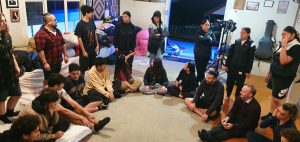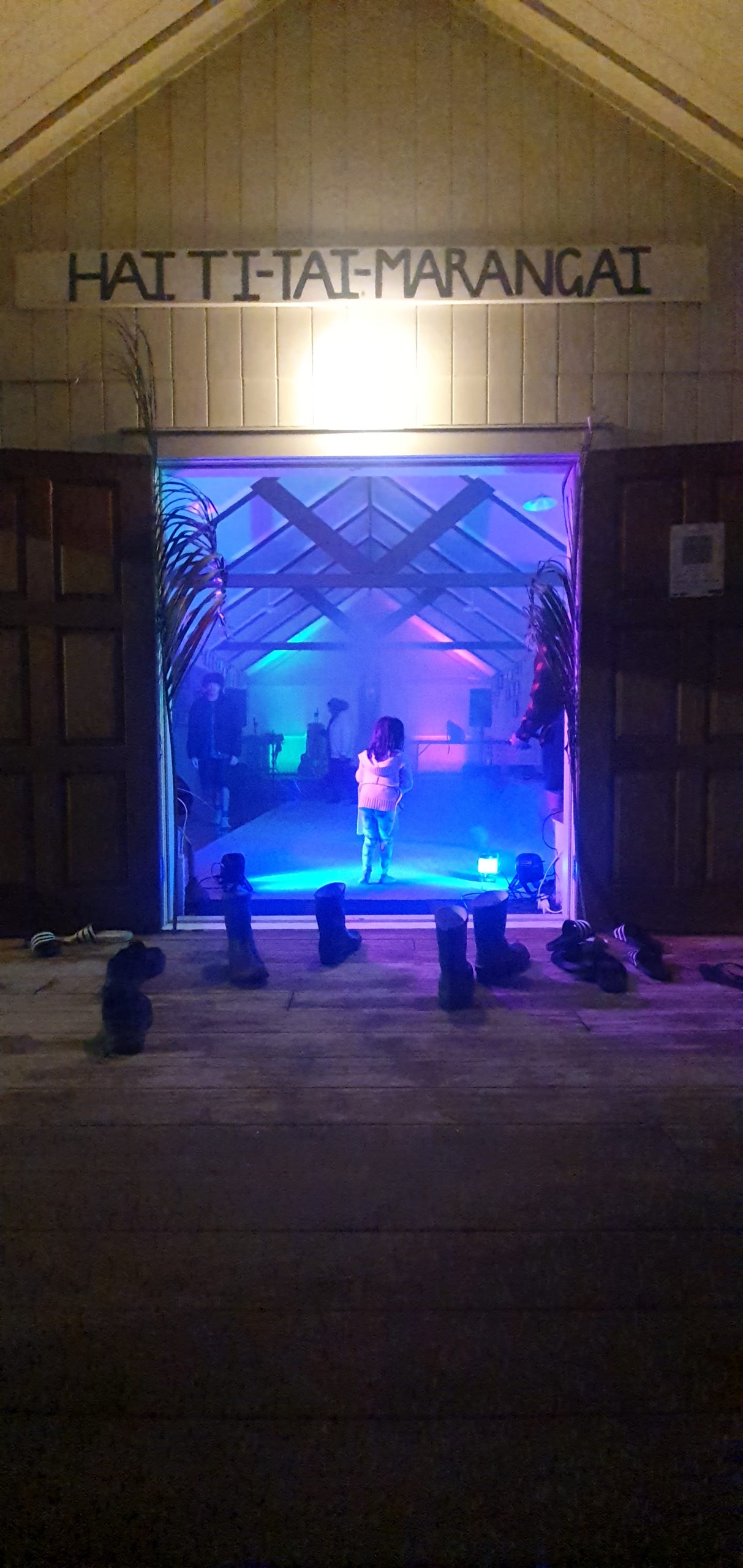Ko te piko te māhuri, Koia te tipu o te rākau. He rito tangata, he mauri reo, he mauri oro, he mauri ora.
KA TŪ TAHI TĀTOU KI TE KOHIKOHI I TE MĀTAURANGA HEI ORANGA TINANA, HEI ORANGA WAIRUA KIA TŪ TANGATA AI TĀTOU
A flounder will never return to the spot in which it has moved from Once you. miss the flounder you rarely have another chance to capture it again. This talks about the opportunities our students get as they may not come back around, so do your best and savour the moments.

In order for accelerated pedagogy to take place, it requires the ‘system’ to function as a genuine collaborative learning whanau – learning, nurturing and growing together. When we use the word ‘system’, we often refer to the one-hour lessons in the classroom, moving from one subject to another, not by your choice but because you’re only allowed an hour or sometimes two. We are often restricted by timetables, and decisions made by the top table; the ‘system’ is focused on data and genuinely not about the story behind the data. Let’s revisit the six elements of Te Kotahitanga and its ‘Effective Teaching Profile’, its effectiveness in raising student pedagogy and achievement – and its relationship to our Toi Maori Wānanga.
1. MANAAKITANGA – teachers care for their students as culturally located human beings above all else.
Mana-aki-tanga – to develop, support and enhance the mana of all students. In order to develop, support or enhance the mana of our students, we first have to understand a.) what mana is, then b.) what mana our students hold, c.) what condition this mana is in, and d.) how do we connect, or what connection can we make with the student. This will enable genuine relationships, which will allow the students to be open to sharing whakaaro, share whakapapa and ultimately be open to new learning. This can be accomplished by whakawhanaungatanga, however, it takes a professional to read the room and know what taakaro to engage in.
2. MANA MOTUHAKE – teachers care for the performance of their students.
As the wānanga progresses, you will see when breaks are needed and gauge the students’ energy levels. Repetitive tasks to regurgitate knowledge are best for retention and allow the students to practise in different spaces using different activities to mix things up, whether we were in the marae in the ngahere, or on the beach after a game of Ki-o-rahi, it was targeted questioning and taakaro to trigger the mind to regurgitate the pūrākau. Our rangatahi are our partners in learning, it is a two-way relationship between kaiako and akonga.
3. NGA WHAKAPIRINGATANGA – teachers are able to create a secure, well-managed learning environment.
Six P’s talk about Proper Preparation Prevents Piss Poor Performance. If it isn’t set up well or is managed poorly, students will either go two ways – out the gate or become disrespectful and find the kaupapa of no value. Piringa, which is to connect, to link to create seamless joins, also talks about the value of relationships and, again, the importance of whakawhanaungatanga.
4. WANANGA – teachers are able to engage in effective teaching interactions with Māori students as Māori.
This is not only effective for Māori & Māori relationships but also for other cultures and the meaningfulness around feeling safe and encouraged, that making mistakes is a good thing and having the quality time to reflect as a class group, small groups or one on one. The importance of whanaunga through the wānanga and throughout the kaupapa is vital to maintain energy levels and safe working spaces and relationships.
5. AKO – teachers can use strategies that promote effective teaching interactions and relationships with their learners.
During wānanga you will use most if not all of the tools in your kete, but more importantly you will learn more strategies, taakaro, activities during the wānanga from both kaiako and akonga. Wānanga is a genuine space for all to learn, ma te tuakana te teina, ma te teina to tuakana.
6. KOTAHITANGA – teachers promote, monitor and reflect on outcomes that in turn lead to improvements in educational achievement for Māori students. Creating a sense of unity, solidarity and collective/holistic learning outcomes.
Creating a space where students can be themselves and learn, create and share when, where and how they want to. All of this is within a co-constructed framework established with facilitators, kaimahi, kaiako, students and whānau. All are stakeholders in the wānanga process.
Words by: Christian McDonald
